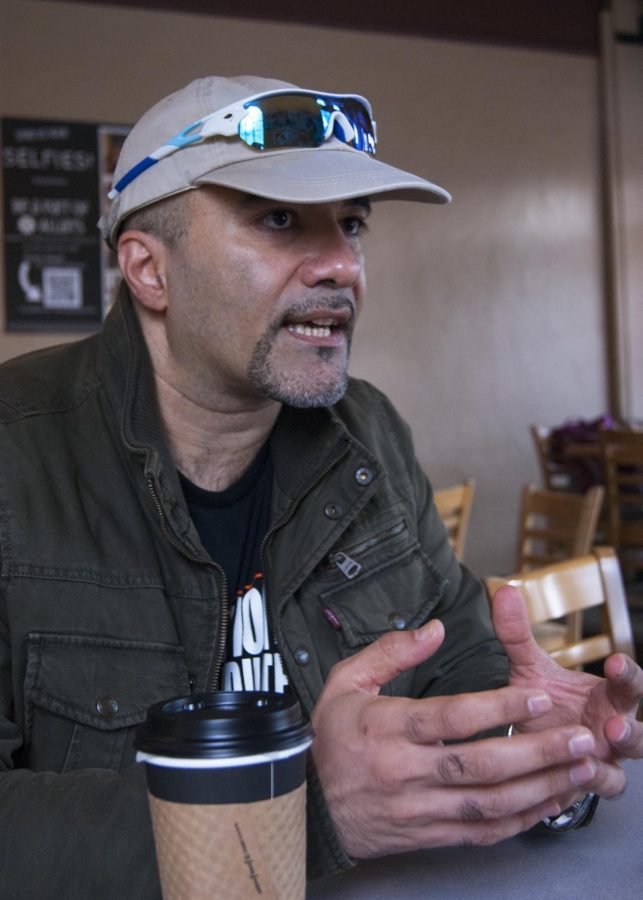Start of spring kicks off Persian new year
March 19, 2018
Nowruz recognizes Iranian culture through traditional celebration.
This upcoming Tuesday marks the start of the Iranian National holiday, Nowruz. Nowruz, which means new day, starts with the vernal equinox every year, signifying the beginning of spring and the start of the new year.
Ali Malek, a Ph.D. candidate from Tehran, Iran who is studying the cold air cooling mechanism within the geography department, said Nowruz is an ancient celebration with roots in Zoroastrianism, a religion from ancient Persia.
“Persians have celebrated the new year with the start of spring,” Malek said. “The first day of Nowruz is typically the 21 of March, which is the spring equinox, the first day of spring.”
Malek said that this is an analogy to the great harmony seen in nature with the start of spring.
“Persians have celebrated (Nowruz) for over 3000 years,” Malek said. “That’s the basic idea with Nowruz, that everything should be new, according to nature. As the winter changes to spring we celebrate our new year according to nature.”
Jonathan Katz, a professor in middle east history who studied in Iran prior to the iranian revolution, said with the ancient roots of the holiday, Katz said Nowruz is definitely a part of the Iranian consciousness of the natural world.
“It makes sense to celebrate the new year beginning with the vernal equinox,” said Professor Katz. “Springtime is when things start anew.”
For Amy Olyaeia, a junior studying microbiology and chemistry, her favorite part of the holiday occurs prior to the beginning of the event.
“My favorite part of Nowruz is the night before March 21, when we set up and jump over a candle, signifying leaving the past behind and leaping into the new year,” Olyaei said via email. “Also Amu Nowruz comes bearing gifts. Amu Nowruz is extremely similar to santa clause.”
Also prior to the holiday occurring, Olyaei spent time leading up to Nowruz deep cleaning her room.
“This is a common aspect of the holiday, having to get rid of the old in order to welcome in the new,” Olyaei said in email.
Once the holiday begins, Malek said that gathering with family is the first way to celebrate.
“We try to gather with our elders, our grandpas and grandmas in our house,” Malek said. “Everyone goes to meet with their family, we go and meet with other families and they come and meet with us.”
The overall celebration lasts about two weeks, and each day is a different party at a different family’s house, Malek said.
“For two weeks the schools are closed, and for that time families have time to take trips and be outside their own town or village to meet with family and be in nature,” Malek said.
Katz said that Nowruz is a unique holiday due to its pre-islamic roots. One particularly interesting aspect of the holiday is the Haft Seen.
“The household has a display of what they call Haft Seen, which is seven items that begin with the letter sin, or the letter s in persian,” Katz said. “Things like sib, which is apple in persian, samak which means fish, sekke which means coin and so on.”
Celebrating Nowruz includes picturesque displays that are essentially the Iranian equivalency to having a Christmas tree in a home, Katz said.
Olyaei celebrated Nowruz with her family by setting up a Haft Seen display every year.
“The Haft Seen enlightens the household environment, and is a reminder of the importance of faith,” Olyaei said in an email.
Nowruz is not only celebrated by those within Iran, but also among those throughout the world whose families have come from Iran and surrounding areas, Olyeia said. Although Olyaei has grown up in the U.S., she enjoys Nowruz because it allows her to experience a part of her culture that is not often seen.
“Nowruz is a time when people are proud to be Persian and want to share their culture with the world,” Olyaei said via email. “Nowruz allows me to share my culture with others. Throughout college I have set up my own Haft-Seen in my room and have shared the experience with some of my closest friends.”











































































































